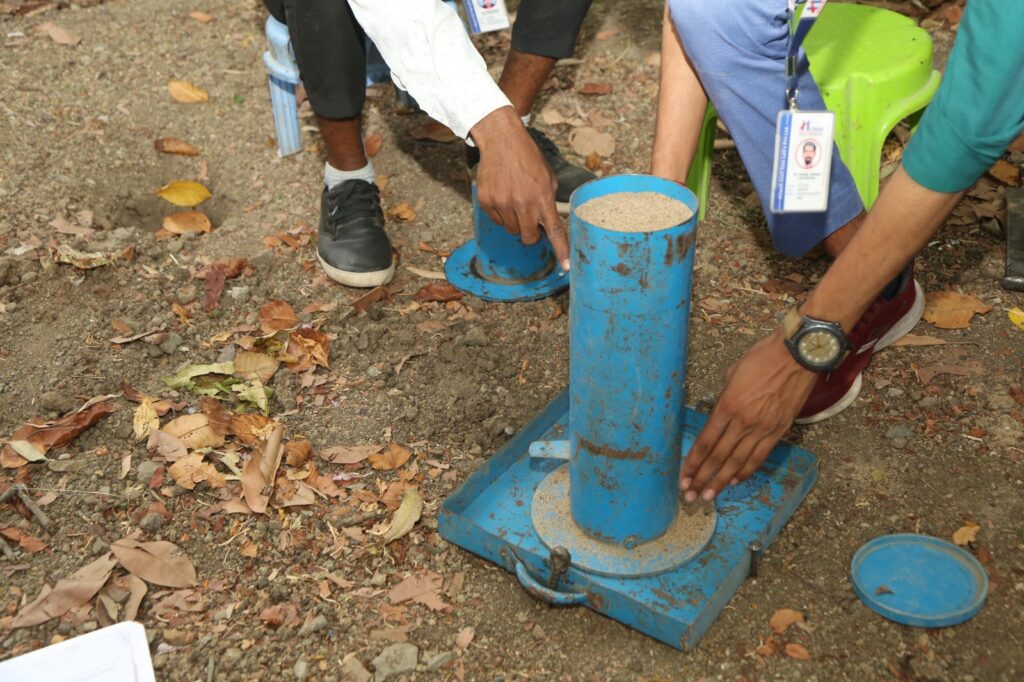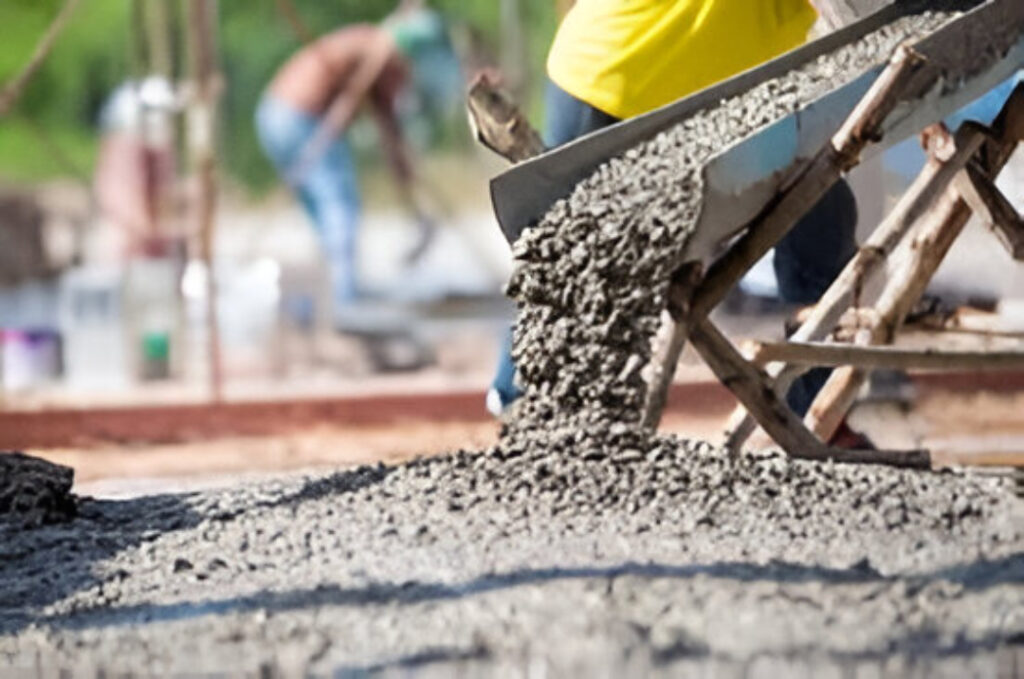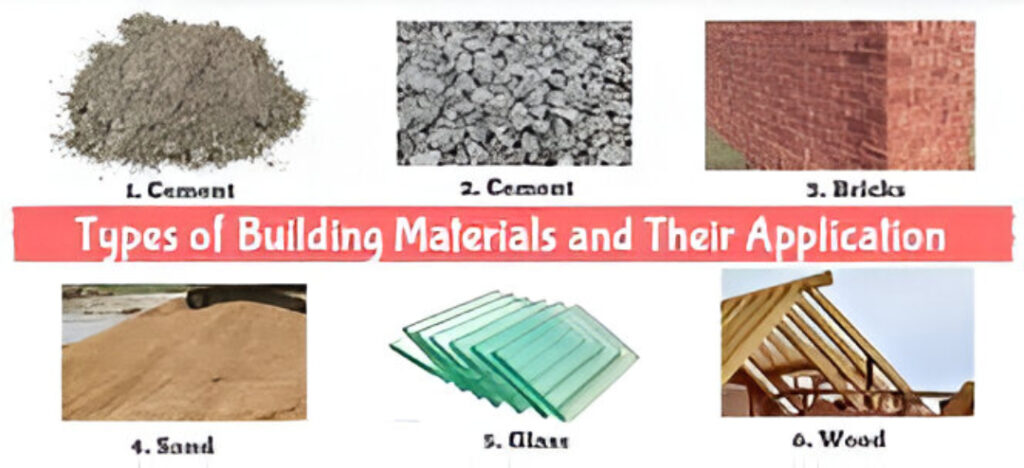Construction projects rely on a variety of materials, each with its own properties and advantages. Ensuring the quality of these materials is critical for the safety and longevity of structures. Here, we’ll discuss seven common construction materials and how to assess their quality effectively.

1. Concrete
Description: Concrete is a composite material made from cement, water, and aggregate (sand, gravel, or rock). It is renowned for its strength and durability, making it a staple in construction.
– Slump Test: This assesses the workability of freshly mixed concrete. A cone-shaped mold is filled with concrete, and once it’s removed, the amount the concrete slumps is measured. Ideal slump values depend on the specific use, typically ranging from 50 to 100 mm for most work.
– Compression Test: Curing concrete samples in standard conditions and testing them for compressive strength at 7, 14, and 28 days helps verify whether the concrete achieves the required strength.
– Air Content Test: This measures the amount of air in concrete, which affects its durability and strength. Typically, air content should be between 4-8% for good performance in freeze-thaw conditions.

2. Steel
Description: Steel, often used for reinforcement in concrete structures, offers high tensile strength and ductility. It is vital for constructing frameworks, beams, and reinforcements.
Quality Testing:
– Tensile Test: This determines the yield strength and tensile strength of steel. A sample is pulled until it breaks, and measurements are taken to assess these properties.
– Ultrasonic Testing: An effective method for detecting internal flaws in steel. Sound waves are passed through the steel, and any discrepancies in the transmission indicate potential defects.
– Magnetic Particle Testing: This identifies surface and near-surface defects. A magnetic field is applied to the steel, and iron particles are sprinkled over it; defects will attract the particles, highlighting issues.
3. Wood
Description: Wood is a versatile and aesthetically pleasing material used in construction for framing, flooring, and finishing. Different types of wood have varying strengths and uses.
Quality Testing:
– Moisture Content Test: High moisture content in wood can lead to warping and weakening. A moisture meter can quickly measure this; generally, the ideal moisture content should be between 6% and 12%.
– Structural Integrity Check: Inspecting wood for knots, splits, or signs of decay (e.g., fungal growth or insect damage) is essential for determining its quality.
– Bending Test: This can assess the strength and flexibility of wood. A sample is subjected to a bending load until it breaks, and the amount it bends before breaking offers insight into its quality.
4. Bricks
Description: Bricks are block-like ceramic materials used in construction for walls, pavements, and other structures. Their longevity and thermal properties make them a popular choice.
Quality Testing:
– Water Absorption Test: Submerging a brick in water for 24 hours determines its porosity; a high absorption rate indicates low quality. Quality bricks typically absorb less than 20% of their weight in water.
– Compressive Strength Test: This measures how much load a brick can withstand. Samples are placed in a compression machine until they fail, and this is compared against established standards.
– Soundness Test: Tapping two bricks together should produce a ringing sound. A dull sound might indicate poor quality or internal flaws in the bricks.

5. Glass
Description: Used in windows, facades, and doors, glass adds aesthetic value and light to buildings. Different types include tempered, laminated, and insulating glass.
Quality Testing:
– Thickness Measurement: Ensuring the glass meets specified thickness standards helps in assessing its strength and insulation properties. Micrometers or calipers can be used for accuracy.
– Visual Inspection: Checking for surface defects, bubbles, or distortions is key. Quality glass should have a clear, uniform surface.
– Impact Resistance Test: Testing glass for its ability to withstand impacts without breaking, particularly in safety applications, is crucial. This can involve dropping a weight or using a pendulum impact tester.
6. Asphalt
Description: Asphalt is primarily used for road construction and paving applications. Its durability and waterproof qualities make it a commonly employed material.
Quality Testing:
– Viscosity Test: This assesses the flow properties of asphalt to ensure it will perform well under temperature variations. Using a viscosity meter helps quantify this property.
– Aggregate Gradation Test: Ensuring that the aggregate mixed with asphalt conforms to specified grading standards is vital for performance. This involves sieving the aggregate and measuring the particle size distribution.
– Rutting Resistance Test: Simulating traffic load and temperature conditions helps determine how well an asphalt mix can resist deformation under stress.
7. Insulation Materials
Description: Insulation materials (e.g., fiberglass, foam, cellulose) are essential for energy efficiency in buildings, reducing heat loss and gain.
Quality Testing:
– Thermal Resistance (R-value) Test: This measures insulation’s ability to resist heat flow. Higher R-values indicate better insulation. Laboratory tests determine the R-value for different materials.
– Sound Absorption Testing: Some insulation materials also provide sound reduction. This test evaluates how well a material can absorb sound waves.
– Moisture Resistance Testing: This assesses how well the insulation can withstand moisture, which is critical for performance in humid environments.
The integrity and performance of construction materials directly influence the durability, safety, and efficiency of structures. By employing various tests, construction professionals can ensure that the materials used meet the required standards, minimizing risks and enhancing the longevity of their projects.
Regular quality assessments are crucial, not only to comply with regulations but also to maintain the trust of clients and stakeholders in the construction industry. Properly tested and vetted materials can lead to successful projects that stand the test of time.
